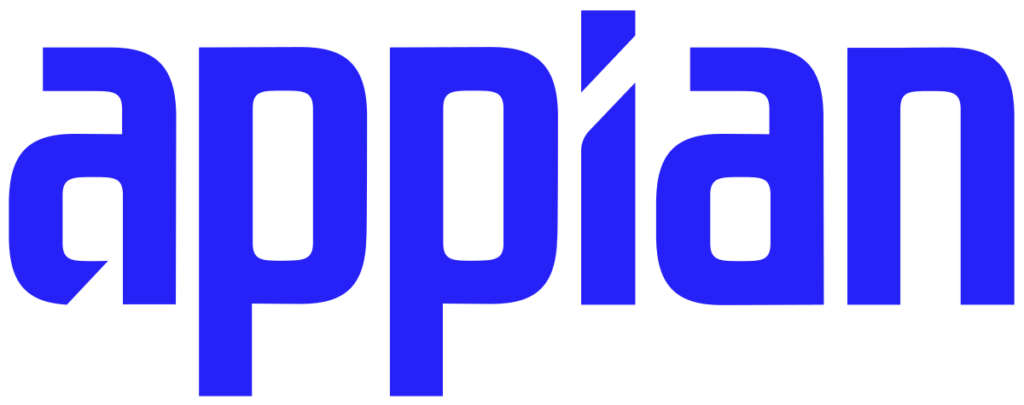
In the fast-paced world of business, optimizing processes and operations is crucial for success. To stay competitive and meet evolving customer demands, organizations need to streamline their workflows efficiently. Business Process Management (BPM) software solutions have become essential tools for achieving this goal. In this comprehensive guide, we will explore the top 11 BPM software solutions for 2023 that will empower your organization to thrive by enhancing efficiency, productivity, and agility.
1. Zoho Creator

Zoho Creator is an intuitive and low-code BPM software that allows organisations to design, automate, and optimize their business processes with ease. With its drag-and-drop interface, Zoho Creator enables users to create customized applications and workflows tailored to their specific needs. Whether you’re looking to automate tasks, manage data, or build complex business applications, Zoho Creator provides the tools to make it happen.
- Pros: Intuitive low-code interface for easy customization.
- Cons: Limited scalability for complex enterprise needs
2. Kissflow

Kissflow is a BPM platform designed to simplify business processes through automation and collaboration. It offers an extensive library of pre-built templates, making it easy for organizations to get started with process automation. Kissflow also provides real-time analytics and reporting features, allowing you to gain insights into your processes and make data-driven decisions for continuous improvement.
- Pros: Extensive library of pre-built templates for rapid deployment.
- Cons: Advanced customization options may be limited for complex processes.
3. Nintex

Nintex is a leading BPM and workflow automation platform that empowers organizations to automate, optimize, and orchestrate their processes. With Nintex, you can create intelligent workflows, integrate with third-party applications, and leverage AI capabilities for process enhancement. Its visual interface makes it accessible for both technical and non-technical users.
- Pros: Robust workflow automation with advanced AI capabilities.
- Cons: Higher cost compared to some other BPM solutions.

bud!
4. Appian

Appian offers a low-code BPM platform that combines process automation, data management, and AI capabilities. It enables organizations to design, execute, and continuously improve their business processes. Appian’s focus on automation and low-code development allows businesses to quickly adapt to changing market conditions and stay competitive.
- Pros: Powerful low-code platform with a focus on automation.
- Cons: Requires some technical expertise for advanced customization.
5. TIBCO ActiveMatrix

TIBCO ActiveMatrix is a comprehensive BPM and digital process automation solution designed for complex and dynamic environments. It offers a wide range of features, including process modelling, business rules management, and case management. TIBCO’s platform is known for its scalability and ability to handle large-scale enterprise processes.
- Pros: Scalable and versatile BPM solution for complex environments.
- Cons: Steeper learning curve for implementation and maintenance
6. Pega Platform

Pega Platform is an intelligent BPM and low-code application development platform that enables organizations to build, deploy, and scale applications quickly. Pega’s AI-driven capabilities help automate tasks, provide real-time recommendations, and optimize processes for improved efficiency. It’s an ideal choice for enterprises looking to transform their operations.
- Pros: AI-driven automation and decision-making for process optimization.
- Cons: High initial investment for licensing and training.

bud!
7. ProcessMaker

ProcessMaker is an open-source BPM and workflow automation software that focuses on agility and customization. It offers a user-friendly interface and a range of tools for process modeling, automation, and optimization. ProcessMaker also supports integration with popular third-party applications, making it a versatile choice for organizations of all sizes.
- Pros: Open-source flexibility with a range of customization options.
- Cons: Limited support for complex integrations.
8. Bonita

Bonita is an open-source BPM and workflow automation platform designed for businesses seeking flexibility and scalability. It offers visual process modeling, automation, and workflow orchestration capabilities. Bonita’s open architecture allows for easy integration with existing systems and customization to meet specific business needs.
- Pros: Open-source BPM with a focus on customization and scalability.
- Cons: Smaller community support compared to some competitors.
9. K2 Software

K2 Software is a BPM and low-code application development platform that empowers organizations to automate and optimize their processes. It offers features like process modelling, workflow automation, and data integration. K2’s user-friendly interface and low-code capabilities make it accessible for business users and IT professionals alike.
- Pros: User-friendly low-code platform for rapid application development.
- Cons: May require additional modules for advanced features.
10. AgilePoint

AgilePoint is a BPM and low-code platform that focuses on process automation, digital transformation, and application development. It offers a visual interface for process design, integration with popular systems, and the ability to create custom applications. AgilePoint’s flexibility makes it suitable for various industries and use cases.
- Pros: Flexible platform for process automation and digital transformation.
- Cons: Licensing costs can add up with extensive usage.
11. IBM Business Automation Workflow

IBM Business Automation Workflow is a robust BPM and digital process automation solution that provides end-to-end automation capabilities. It offers advanced features such as AI-driven decision-making, content management, and business rules management. IBM’s platform is renowned for its ability to handle complex workflows and compliance requirements.
- Pros: End-to-end automation capabilities with advanced decision-making.
- Cons: Higher cost of ownership and resource-intensive implementation.
Choosing the Right BPM Software
Selecting the right BPM software for your organization is a critical decision. Here are some key factors to consider when making your choice:
1. Workflow Complexity: Assess the complexity of your organization’s workflows. Some BPM tools are better suited for simple processes, while others excel in handling complex and dynamic workflows.
2. Integration: Ensure that the BPM software can seamlessly integrate with your existing systems and applications. This is crucial for data exchange and process continuity.
3. Scalability: Consider your organization’s growth and whether the BPM software can scale with your evolving needs. Scalability is essential for long-term viability.
4. User-Friendliness: Evaluate the user-friendliness of the software, especially if non-technical users will be involved in process design and management.
5. Customization: Look for BPM software that allows customization to adapt to your unique business processes and requirements.
6. Compliance and Security: If your industry requires strict compliance or deals with sensitive data, prioritize BPM software with robust security features and compliance capabilities.
7. Cost: Assess the pricing structure of the BPM software, including licensing, support, and any additional costs for customization or integration.
8. Support and Training: Ensure that the software provider offers adequate support and training resources to help your team effectively use and maintain the BPM solution.
Conclusion
In 2023, organizations face increasing demands for efficiency, agility, and responsiveness. Business Process Management software has evolved to meet these challenges head-on. The top 11 BPM software solutions mentioned in this guide offer a diverse range of features and capabilities to help businesses streamline their processes, optimize operations, and adapt to an ever-changing business landscape.
As you explore these options, remember to align your choice with your organization’s specific needs and goals. By implementing the right BPM software, you can empower your organization to thrive and excel in 2023 and beyond. Streamline your success and stay competitive in a dynamic world with the power of BPM software.
